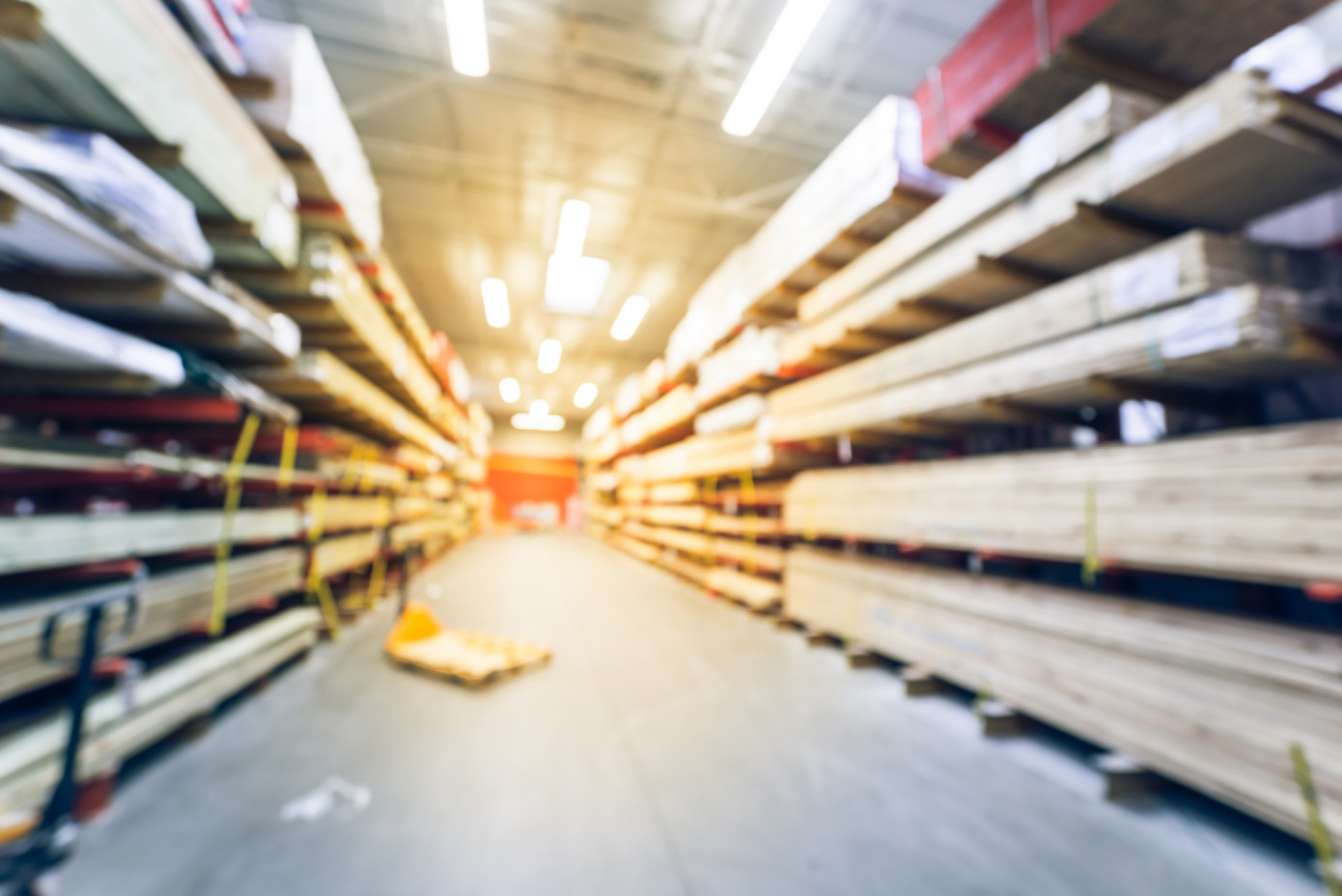Fires, floods and supply chain disruptions affect U.S. lumber prices. And now the Department of Commerce has doubled the duties on the imports of softwood lumber from Canada. How to navigate between these factors and understand where prices will go? This is challenging for everyone but Russ Taylor, president of Russ Taylor Global, who has decades of experience analyzing the wood markets around the world. We asked Russ to share how the lumber markets will develop in the coming months.
Lesprom Network: How will the U.S. increase in softwood lumber duties affect sawmills in Canada?
Russ Taylor: This is part of the annual U.S. review, so we expected this. We predicted the early draft numbers were around 18% and it will average 17.9%. So, no surprise here. Some of the company's get different allocations. It's a fact of life for Canadian mills doing business in the U.S. If you want to sell in the U.S., you must understand the rules of the game as it has been for over 40 years. And how the duties are exactly calculated is difficult to understand, but nevertheless it is what it is.
Lesprom Network: How might this affect the U.S. lumber prices?
Russ Taylor: The Canadians have essentially pushed the increased duty through to the market, given all the other circumstances going on with all the floods and the forest policy issues in BC. With all the demand drivers are running strong right now, the duties have essentially been pushed through.
Lumber prices are rebounding where the cash price today on Western SPF #2&Better Random Length (FOB BC Mill) was US$645 per thousand board feet, or $400 per cubic meter. Two weeks ago, it was about $90 per thousand board feet lower. So, with the duties getting closer to being put on and then the bad weather in BC, this has caused the prices to go up. If the 9% increase is about $50 a thousand board feet, we've already gained almost double that in the last two weeks.
The other factors impacting market prices are the ongoing supply chain disruptions and that's going to continue to compound the supply, and I think the prices are going to keep going up. The lumber futures, which is never a very reliable guide for prices in my opinion, were at $800 per thousand board feet about four or five weeks ago, and then things calmed down. But now they're back to around $800 again on the January contract. This is a big premium over cash that tells me that the futures market players expect prices to go higher. Some traders believe that $1,000 is possible.

Lesprom Network: How does the rainfall and flooding affect the British Columbia sawmills?
Russ Taylor: We would call it a 100-year storm and the official term is an “atmospheric river”. We normally get lots of rain in November, that's nothing unusual. But this year October has been quite wet. November has been excessively wet. We've had 200-300% of our normal November rainfall in a few days in some areas. Therefore, there is lots of flood waters around in BC with three more atmospheric rivers forecast in the next 6 days.
Perhaps three or four mills that were directly impacted by the flooding and are not operating. It is more about the logistics of shipping products from the mills to the market. The two major four-lane highways in BC as well as the other two secondary highways all had major bridges or roads washed out. Two of the secondary highways had been repaired in most places, but the two main highways have multiple four-lane bridges that were washed out. They will take months to repair and perhaps a year or maybe even longer to replace.
The truck traffic will have to go in different directions as it can't go through BC to the west or the south, and it will have to go east and go round washed-out roads in BC. The two major rail lines were both severed as well along with the rail bridges. So, getting the full train traffic moving again is going to take time as well. Some rail routes have just started moving, but not throughout the province, only in some areas where there's minor damage.
Most of the wood to the U.S. goes by rail, with truck shipments limited to shorter hauls as well as south to California. Trying to get rail cars in central BC or in neighboring Alberta is going to be difficult because many rail cars are stranded in various locations and they can't move. The industry already required more railcars than what was available, and now there is going to be even less, and there's already a tight demand for trucks. Shipping lumber, plywood and OSB to the rest of Canada or to the U.S. market is going to be constrained in the short term, and that is going to tighten up the wood supply for the next few months.
Lesprom Network: Cargo services to the Port of Vancouver, the third largest port in North America, have been interrupted for a week due to flooding and are not fully restored. How will this affect overseas lumber shipments from Canada?
Russ Taylor: The port of Vancouver was already congested with empty containers and to the point they had to start shipping out empty containers on vessels to create port space to allow ships to unload. So, there was already a lot of wood sitting on the docks ready to go to Asia or other offshore markets. And now with all the problems with the floods and the lack of movement at the Vancouver port where we're going to see further delays in getting shipments offshore. Mills are going to be diverting some of their new production into the U.S. or Canadian markets. That should tighten up the offshore supplies.
Lesprom Network: How long will the impact on the lumber market from rising duties and logistics problems last, and what prices for lumber should be expected in the future?
Russ Taylor: I think we're going to see prices rising steadily for the next 3-4 months. Seasonally, it does start to pick up anyways about late November through December and then we normally tend to see prices rising throughout the first quarter. This is the usual time when dealers try to get more inventory while prices are cheaper. I expect that this trend is going to continue probably through much of the first quarter of 2022, if not slightly beyond that. After that, we tend to see a normal seasonal price correction in the second quarter. But again, what I keep trying to tell people is that there are so many wild cards out there: some you can predict like duties, some you can't predict, like floods. And that means that prices will be volatile as they have been incredibly over the last three or four years.
Lesprom Network: The supply of lumber from Europe to the U.S. increased in the summer and began to decline in the fall. Can the U.S. lumber market rely on renewed growth from this source?
Russ Taylor: The European supply did slow down in the third quarter of 2021, but the prices had collapsed. With these poor prices, the Europeans moved to other markets. The prices are most likely going to be strong for the next six months in the U.S. market. At the same time, North America cannot produce enough lumber for itself given the favourable consumption forecast.
I expect that North America will be short again on supply in 2022. Either we reduce exports to use it internally, or we increase imports, which is what we've been doing. North America will still need to increase European exports by up to another 500,000 cubic meters going forward from the levels we had in 2021 because that is the potential supply gap that I see. That means there is still an open door for more European wood to come into the U.S. market and that is why I expect U.S. lumber prices to remain high.
Lesprom Network: How will the supply of sawlogs in China develop next year, when Russia stops exporting logs?
Russ Taylor: The largest log supplier to China is New Zealand right now. They are nearing the peak of their harvest and their harvest level will start to drop in the next five years. Some say maybe not for another 10 years, but there's probably no more substantial increase available in the New Zealand harvest. The second largest supplier is Europe, Germany, Czech Republic, a little bit of Austria. There is due to the bark beetle problem that has allowed for the export of huge surplus volumes until the middle of 2021.The Central European industry is now needing more of their own logs to feed their own domestic sawmills because there's a lot more capacity built up, especially in Germany but also in Czech Republic. Less of that beetle-killed log supply will be exported, and we're going to see a slow reduction in supply from Europe of beetle logs to China.
And then the third largest supplier was Australia that has a log export ban that seems to stay in place. Then the 4th largest exporter was the U.S. and now we have problems with the pinewood nematode that's restricting shipments of southern yellow pine and even some West Coast species could be impacted. But because of the requirement for fumigation or heat treating, it has caused southern yellow pine log exports to essentially cease.
After that you're into smaller players like Uruguay and Brazil and so forth. And that means that there appears to be no sustainable long-term log supply for China. I believe there will be a log supply crisis in the next five years in China. This means that China will need to look at more imported lumber which may happen, but that means they must pay higher (closer to global) prices to get more lumber. They could consider more domestic species if they can get access to any volumes, or perhaps non-wood substitutes. I think there's a big change coming in China, but this assumes that wood consumption stays at least sideways or doesn't decrease.
